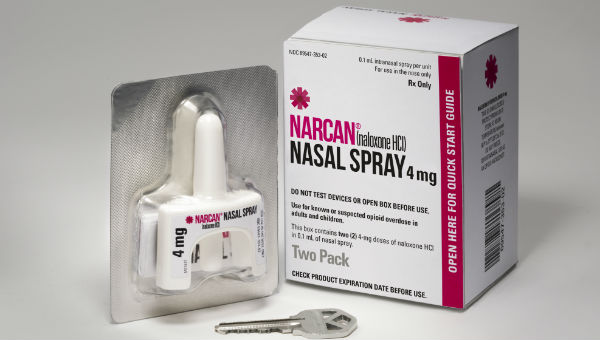State grant puts anti-overdose drug into hands of rural first responders

Newsrooms across the commonwealth have spent years documenting the opioid crisis in their own communities. But now, in the special project State of Emergency: Searching for Solutions to Pennsylvania’s Opioids Crisis, we are marshalling resources to spotlight what Pennsylvanians are doing to try to reverse the soaring number of overdose deaths.
WITF is releasing more than 60 stories, videos and photos throughout July. This week, you will find stories about initial response and how addition affects families.

(Bellefonte) — The job of a first responder in the rural corners of Centre County is no simple task, but since the state launched a project to fund Narcan — an overdose-reversal drug — they have been able save more lives.
Last year, Governor Tom Wolf announced a state-wide effort to combat the opioid crisis, using $5 million in funding to provide more than 63,000 Narcan, or Naloxone, kits to first responders around the state over a two-year period.
Dr. Kasandra Botti of Mount Nittany Medical Center is coordinating the program in Centre County. One of her many responsibilities is keeping track of data.
“The state delivers kits every six months to each county in the state, and it’s based on use,” she said. “We qualified for 144 kits of Naloxone, each kit contains two doses, intranasal doses of Naloxone, and that was based on our statistics.”
With a second distribution from the state in hand, Botti is working to expand the network of first responders receiving the life-saving drug.
“Within Centre County, I have reached out to every EMS service and to most police departments in the area, and then folks have reached out to me,” Botti said. “School districts have reached out to me to have donations. Many people may not realize, but under this grant… a librarian is considered a first responder.”
But for Sharon Nilson, there’s no question what qualifies as a first responder.
“We’re so far away from additional help,” said the EMS operations chief of Snow Shoe, in the northeastern corner of the county. “It’s good for us to have the Naloxone on the ambulances because we can provide that care right away.”
Snow Shoe has the last-remaining volunteer EMS service in Centre County, ready to service its rural 171 square miles and 2,000 people. Its 11-member team was one of the many basic life support units that have felt the project’s impact — taking in more kits without also taking on a financial burden.
“It was like $90 per dose for us to buy through our suppliers,” Nilson said “That’s a large expense — especially for a volunteer service. It was going to be a hard hit for us to keep that on our ambulances.”
When Snow Shoe teams are called out, they must rely on State Police in lieu of any kind of local police force. This only adds to the reality that they will very often be the first to a scene — no matter how many times they’ve been there — with quick decisions to make.
Narcan isn’t without its critics.
“I realize this is a very controversial project,” Botti said. “Are we contributing to their addiction by doing this? Are we enabling them by saving their life? If you don’t put the Band Aid on the gushing wound, you will never have the opportunity to make a difference.”
“This is a significant crisis,” she added. “I don’t think a lot of folks realize the magnitude of it, and if not acted upon quickly, people will lose their lives. This is a life-saving measure.”
“I think it’s working. Okay, we’re saving lives. Okay, people aren’t dying from the heroin overdoses as much as they were before,” Nilson said. “It gets to you after a while. You start going, ‘I’ve been here, I’ve been here, I’ve been here.’”
But, for Nilson, two plus two will always equal four.
“‘They’ve done it to themselves, so why are we trying to save them?’ My response to that is always: Our job is to provide care.
With the project and grant only structured for a two-year period, and not yet enough data gathered in its infancy, its future is unknown. Though she believes rehab, help and more than a wonder drug will be needed to combat the opioid crisis sweeping the nation, Nilson hopes to see this program continue.


